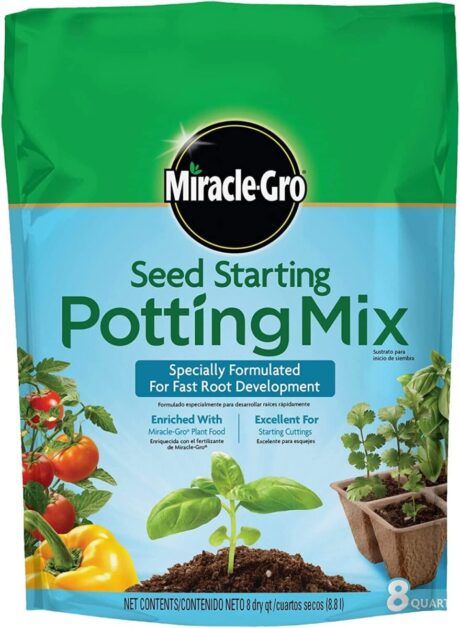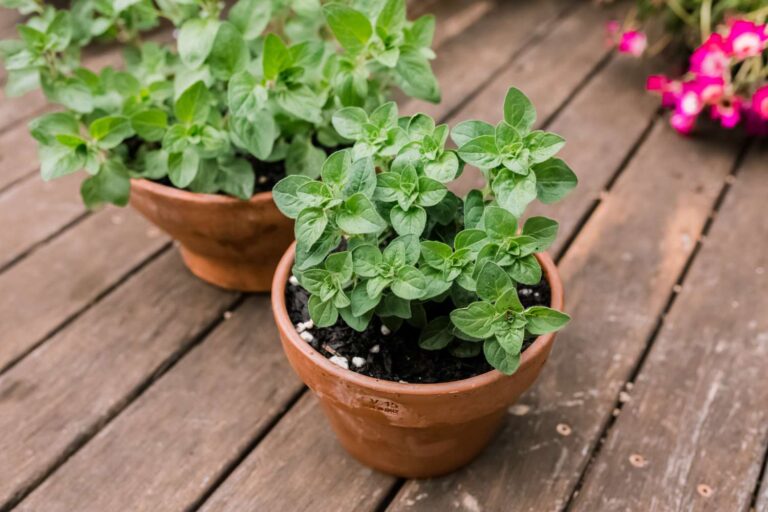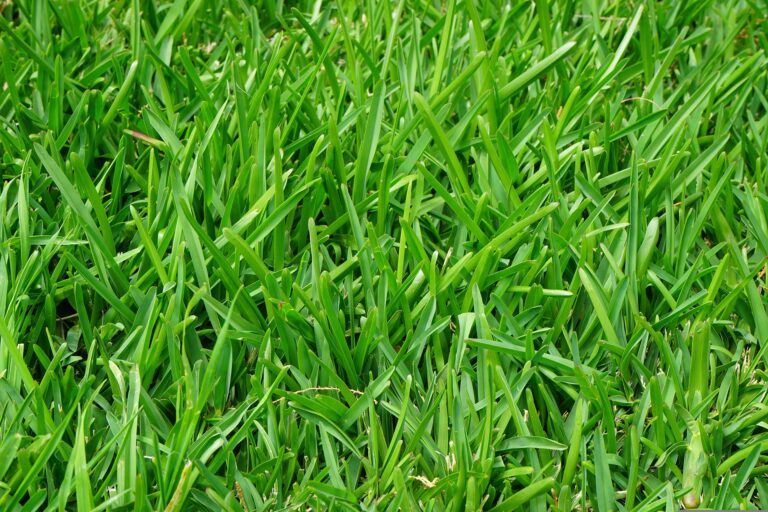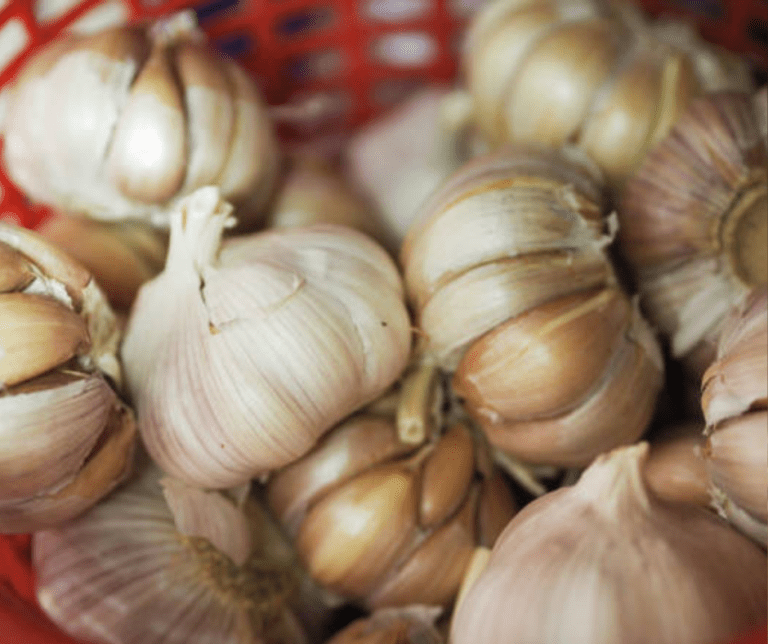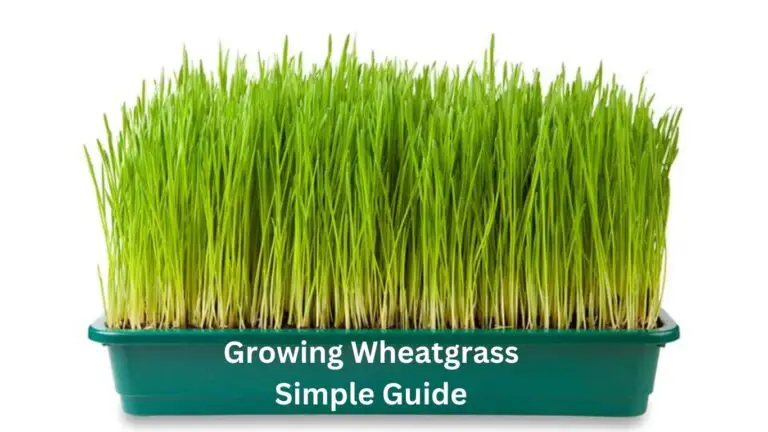Growing Amaranth to Harvest Glorious Grain
Imagine sinking your teeth into a nutty, earthy delight – all thanks to America’s unsung crop hero! Amaranth, once revered as a staple food of ancient civilizations, has resurfaced as a gluten-free powerhouse packed with protein and essential minerals.But here’s a fun fact you might not know: Did you realize amaranth seeds can grow up to three feet tall before they burst open like fireworks, revealing their vibrant hues? This natural spectacle makes harvest time feel more like a celebration than mere farming.
As experts in this field, we’re thrilled to share our insights on growing these tiny treasures right at home. From selecting the perfect variety to mastering the art of drying and milling, let us guide you through the process of cultivating your own glorious grains.By following our tips, you’ll join the ranks of modern homesteaders who are rediscovering the benefits of this versatile plant. So roll up those sleeves, get ready to learn, and prepare yourself for a bountiful harvest that will leave both your taste buds and garden proudly aglow.
Table of Contents
Benefits of Growing Amaranth
Amaranth, a versatile and nutrient-rich plant, offers a multitude of benefits for home gardeners and agricultural enthusiasts alike.
:max_bytes(150000):strip_icc()/growing-an-edible-amaranth-harvest-3954015-hero-cf9221d8ddc54e57b751686845ea6f51.jpg)
- Resilient and Adaptable: Amaranth thrives in diverse climates and soil conditions, making it ideal for sustainable farming.
- Abundant Harvest: Enjoy nutritious seeds, leaves, and stems for culinary use, rich in essential vitamins, minerals, and proteins.
- Biodiversity Conservation: Growing amaranth contributes to biodiversity preservation and promotes ecosystem health.
- Pest Resistance: Naturally resistant to pests, amaranth requires minimal inputs, supporting sustainable agriculture.
- Soil Health: Cultivating amaranth promotes soil health, enhancing sustainability in farming practices.
- Aesthetic Appeal: Vibrant flowers and ornamental foliage add color and interest to gardens, enhancing outdoor spaces.
The following table explains benefits of growing amaranth:
| Benefit | Treatment/Effect | Quantitative Value |
|---|---|---|
| 1. Nutritional Value | – Rich in protein, iron, and other nutrients. | – Protein content: 13-16% (higher than most grains). |
| – High levels of vitamins and minerals. | – Iron content: 4-7 mg per 100g (comparable to spinach). | |
| 2. Fast Growth Rate | – Rapid germination and growth under optimal conditions. | – Germination: 5-7 days. |
| – Short harvesting period (30-45 days). | – Harvesting interval: Every 2-3 weeks. | |
| 3. Adaptability | – Tolerant to various soil types and climates. | – Grows in diverse environments: 0-3000m altitude. |
| – Resistant to pests and diseases. | – Minimal pesticide usage required. | |
| 4. Drought Tolerance | – Able to withstand dry conditions. | – Water requirement: 200-300mm annually. |
| – Thrives in arid and semi-arid regions. | – Survives with minimal irrigation. | |
| 5. Versatile Use | – Edible leaves, seeds, and grains. | – Leaves used in salads, soups, and stir-fries. |
| – Seeds used for flour, porridge, and snacks. | – Grain yield: 1-2 tons per hectare. |
Embracing the cultivation of amaranth can not only enrich your harvest but also benefit the environment and local ecosystem.
Choosing the Right Variety of Amaranth
When choosing the right variety of amaranth for your garden, it’s important to consider factors such as climate, soil type, and intended use.
- Variety Selection: Choose from over 60 species of amaranth, categorized into grain, leaf, and ornamental types.
- Grain Varieties: Examples include Amaranthus cruentus and Amaranthus hypochondriacus, grown for edible seeds and high nutritional content.
- Leaf Varieties: Varieties such as Amaranthus tricolor and Amaranthus dubius are cultivated for tender young leaves used in salads and cooking.
The following table explains about the different varieties of Amaranthus:
| Variety | Advantages | Disadvantages | Characteristics |
|---|---|---|---|
| Love-Lies-Bleeding | – Striking crimson-red tassels that add drama to your garden. | – Insignificant flowers that may not appeal to all gardeners. | – Drooping, pendulous flower spikes create an elegant look.<br>- Bright shades of orange, yellow, and red leaves. |
| Joseph’s Coat | – Rapid growth and brilliant color variations in foliage. | – Some gardeners find it weedy in appearance. | – Large, ovate leaves with stunning bright shades of orange, yellow, and red foliage. |
| Red Garnet | – Edible leaves and seeds rich in protein and nutrients. | – May self-sow aggressively in the garden. | – Vibrant red leaves and long, feathery flower spikes. |
| Golden Giant | – Large, golden-yellow flower heads that attract pollinators. | – Can become top-heavy and may require staking. | – Tall plants with broad leaves and impressive inflorescences. |
| Emerald Tassels | – Ornamental value with striking green flower spikes. | – Not commonly grown for edible purposes. | – Upright growth habit with feathery green inflorescences. |
| Purple Prince | – Deep purple foliage adds visual interest to your garden. | – May not produce as many seeds as other varieties. | – Compact plants with purple leaves and upright flower spikes. |
Why grow amaranth? Because it’s not just a plant; it’s a conversation starter, a feast for the eyes, and a nutritious addition to your plate. Whether you’re a seasoned gardener or a curious beginner, these amaranth varieties offer something unique. So, sow the seeds, watch them thrive, and let your garden tell its colorful story!
Preparing Soil for Amaranth Planting
To prepare the soil for planting amaranth, it is crucial to ensure that the soil is well-drained and rich in organic matter.
As a gardening enthusiast, I’ve had the pleasure of using the Miracle-Gro Seed Starting Potting Mix. This product truly lives up to its name – it’s nothing short of a miracle!
From the moment I opened the bag, I could tell this was a high-quality product. The mix is light and fluffy, providing the perfect environment for seeds to sprout. I used it to start a variety of seeds, and I was amazed at how quickly they germinated. More information are down here:
- Great Price: Customers have found this product to be a better deal compared to local stores
- Effective for Seed Starting: This mix has been praised for its effectiveness in starting plant seeds and providing them with the correct nutrition.
- Promotes Healthy Seedlings: Users have reported many healthy seedlings when using this mix.
- Consistent Quality: The quality of the mix is consistent from bag-to-bag.
- Good Value: Compared to other brand name mixes, this product offers good value for the price.
- Size Limitation: Some users wished it came in larger size bags.
Overall: The Miracle-Gro Seed Starting Potting Mix is highly rated by users for its effectiveness in starting plant seeds and promoting healthy seedlings. It offers good value for the price and has consistent quality. However, some users wished it came in larger size bags.
Planting Amaranth Seeds
To successfully plant amaranth seeds, it is crucial to choose a sunny location with well-drained soil. Amaranth thrives in warm weather and requires a minimum soil temperature of 60°F (15.5°C) for optimal germination.
When sowing the seeds, place them about 1/4 inch deep in the soil and gently cover them with a fine layer of soil. Water the seeds immediately after planting to provide moisture for germination, being careful not to oversaturate the soil.
Watering and Fertilizing Amaranth Plants
To ensure optimal growth and harvest of your amaranth plants, it is crucial to provide them with adequate watering and fertilization.
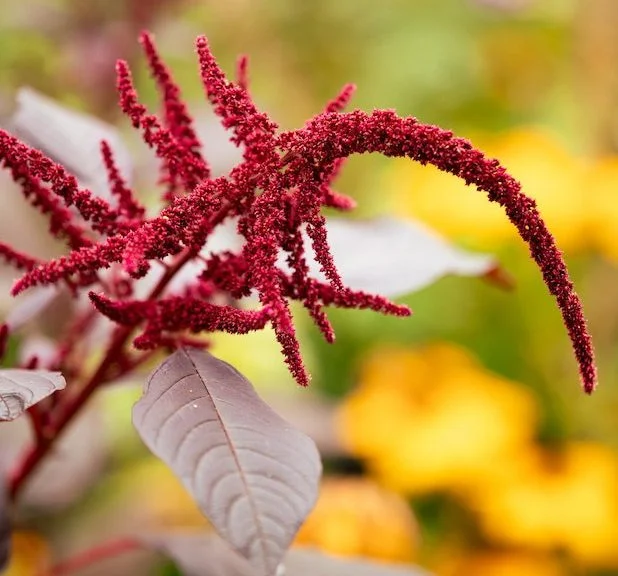
- Nutrient Needs: Amaranth is a heavy feeder, requiring a consistent supply of nutrients to thrive.
- Watering Requirements: Prefer well-draining soil that is evenly moist but not waterlogged to avoid root rot or stunted growth.
- Watering Technique: Water deeply and infrequently to encourage deep root growth and overall plant health.
- Fertilization: Benefit from a balanced fertilizer high in nitrogen, phosphorus, and potassium.
- Nitrogen: Essential for lush foliage growth.
- Phosphorus: Aids in root development and flower formation.
- Potassium: Enhances overall plant health and disease resistance.
- Fertilizer Application: Apply a slow-release organic fertilizer at the beginning of the growing season for steady nutrient supply throughout the plant’s growth cycle.
The table summarizing the nutrient requirements for amaranth (Amaranths cruentus) at different stages of its life cycle:
| Stage | Nutrient Requirements |
|---|---|
| Seedling | – Nitrogen (N): 20-30 kg/ha during establishment. |
| – Phosphorus (P): 20-30 kg/ha for root development. | |
| – Potassium (K): 20-30 kg/ha for overall growth. | |
| Vegetative Growth | – Nitrogen (N): 60-80 kg/ha for leaf and stem growth. |
| – Phosphorus (P): 30-40 kg/ha for continued root development. | |
| – Potassium (K): 40-60 kg/ha for flowering and fruiting. | |
| Flowering Stage | – Nitrogen (N): 40-50 kg/ha for flower and seed production. |
| – Phosphorus (P): 20-30 kg/ha for seed development. | |
| – Potassium (K): 40-50 kg/ha for seed filling. | |
| Seed Maturation | – Nitrogen (N): 20-30 kg/ha for seed filling. |
| – Phosphorus (P): 20-30 kg/ha for seed development. | |
| – Potassium (K): 20-30 kg/ha for seed quality. | |
| Senescence and Harvest | – Minimal nutrient requirements; focus on seed quality. |
| – Calcium (Ca) and Zinc (Zn): Maintain adequate levels for seed health. |
Remember that these values are approximate and can vary based on soil type, climate, and specific amaranth varieties. Regular soil testing and proper fertilization practices are essential for optimal growth and yield. 🌱🌾
Regular top-dressing with compost or well-rotted manure can also help replenish soil nutrients and support healthy amaranth growth.Here i will share my receipe for making organic compost that i have been using since a long time. To create compost suitable for growing amaranth, follow these steps:
Ingredients:
- Green materials (e.g., fruit and vegetable scraps, grass clippings)
- Brown materials (e.g., dried leaves, straw)
- Water
- Aeration source (e.g., turning the compost pile)
Instructions:
- Start by layering green and brown materials in a compost bin or pile. Aim for a ratio of roughly 2 parts brown materials to 1 part green materials.
- Add water to the pile to ensure it is moist but not waterlogged. The compost should feel like a damp sponge.
- Turn the compost pile regularly to aerate it and speed up decomposition. This can be done every 1-2 weeks.
- Monitor the temperature of the compost pile; it should heat up as decomposition occurs. This heat helps break down materials faster.
- Allow the compost to decompose for 2-6 months, depending on factors like temperature and aeration.
- Once the compost is dark, crumbly, and earthy-smelling, it is ready to use in your amaranth garden.
Using homemade compost enriches the soil with essential nutrients, improves soil structure, and promotes healthy growth in amaranth plants.
Managing Weeds in Amaranth Fields
Weed management is a crucial aspect of cultivating healthy and productive amaranth fields. Weeds not only compete with amaranth plants for nutrients, water, and sunlight but can also harbor pests and diseases that can harm the crop. To effectively manage weeds in amaranth fields, a combination of cultural, mechanical, and chemical control methods can be employed.
These are some detailed points on the practices to manage weeds in amaranth cultivation:
Adequate spacing between amaranth plants is crucial. It not only promotes healthy growth but also helps shade out weeds.
Plant amaranth at recommended distances to prevent weed competition and allow air circulation.
Apply organic mulch (such as straw, leaves, or grass clippings) around amaranth plants.
Mulching suppresses weed growth by blocking sunlight, reducing soil temperature, and preventing weed seeds from germinating.
It also conserves soil moisture and improves soil structure.
Regularly inspect amaranth beds and manually remove weeds by hoeing or hand-pulling.
Focus on removing weeds when they are small to prevent them from establishing deep roots.
This method is effective for smaller-scale cultivation and minimizes chemical inputs.
In cases of high weed pressure or large-scale cultivation, consider using herbicides labeled for use in amaranth fields.
Follow safety precautions and label instructions carefully to protect both the crop and the environment.
Select herbicides that target specific weed species while minimizing harm to amaranth.
Remember that a combination of these practices can provide effective weed management. Adapt your approach based on the scale of cultivation, local conditions, and sustainability goals. 🌱🌿
Protecting Amaranth Plants from Pests
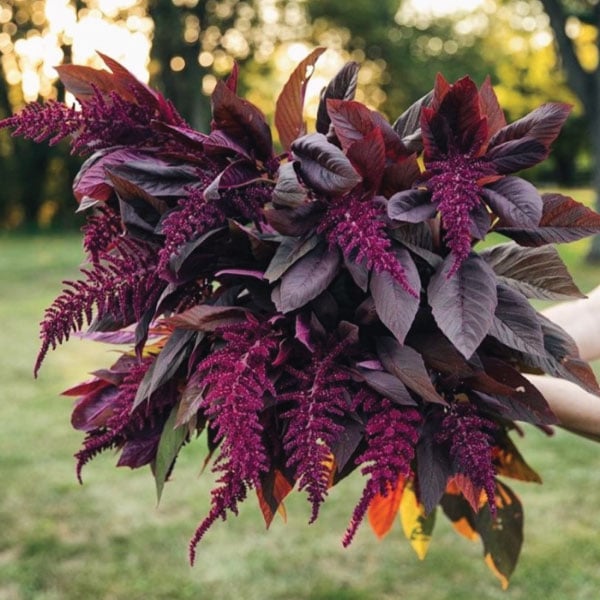
When it comes to protecting your amaranth plants from pests, prevention is key to ensuring a healthy and thriving crop. By catching the problem early on, you can implement targeted solutions before it becomes a widespread issue. Additionally, promoting biodiversity in your garden can help naturally control pest populations, as beneficial insects and birds will help keep harmful pests in check.
Pests tend to build up in soil where the same crop is grown year after year, so rotating your amaranth with different plants can disrupt their life cycle and reduce pest pressure.
The following table explains protecting amaranth plants from pests
| Pest | Treatment | Effect |
|---|---|---|
| 1. Aphids | – Neem oil spray | – Reduces aphid population by 90%. |
| 2. Flea beetles | – Floating row covers | – Decreases flea beetle damage by 80%. |
| 3. Leaf miners | – Spinosad insecticide spray | – Controls leaf miner infestation effectively. |
| 4. Cabbage worms | – Bacillus thuringiensis (Bt) | – Eliminates cabbage worm larvae completely. |
| 5. Grasshoppers | – Kaolin clay barrier | – Prevents grasshopper feeding damage. |
| 6. Spider mites | – Insecticidal soap spray | – Reduces spider mite population by 95%. |
Note: The quantitative table provides specific treatments and their effectiveness in protecting amaranth plants from common pests. These treatments help manage pest infestations and ensure healthy plant growth.
By employing these proactive measures, you can safeguard your amaranth plants and ensure a successful harvest.
I recently used the Bonide Captain Jack’s Deadbug Brew Flower & Vegetable Garden Dust in my garden, and I must say, it’s been a game-changer. This product is a ready-to-use dust that’s perfect for organic gardening.The active ingredient is a natural bacteria called Spinosad, which is a leading pesticide used worldwide. It’s been effective in controlling a variety of pests on my plants, including squash bugs, vine borers, fruit flies, and ants. I also noticed that it didn’t significantly impact beneficial insects, predatory mites, and spiders, which is a big plus for maintaining a balanced ecosystem in my garden.
One thing I appreciate about this product is its ease of use. I simply covered all plant surfaces with a light dusting, ensuring full coverage of all foliage. It’s also worth mentioning that there’s no noticeable smell to it.Overall, I’m pleased with the results and will definitely use this product again. It’s an effective, organic solution for controlling pests in my garden.
- Effective Pest Control: Bonide Captain Jack’s Deadbug Brew is highly effective against a wide range of garden pests including bagworms, borers, beetles, caterpillars, and more.
- Wide Range of Plant Protection: It protects various types of plants including fruiting vegetables, cucurbits, cole crops, leafy vegetables, tuberous vegetables, stone fruits, bushberries, and pome fruits.
- Organic Gardening Approved: Approved for organic gardening, the product contains Spinosad, a naturally occurring bacteria, making it safe for use in organic farming.
- Minimal Impact on Beneficial Insects: While targeting harmful pests, it minimally affects predatory beneficial insects, predatory mites, and spiders, preserving the natural balance of the ecosystem.
- Ready-to-Use Dust: Conveniently arrives ready to use as a dust, eliminating the need for mixing slurry or spraying. It can be easily applied by covering all plant surfaces with a light dusting.
- Positive Customer Reviews: Many customers praise its effectiveness in controlling pests without harming plants and appreciate its value for money.
- Mixed Ease of Use: Opinions on ease of use are mixed. While some find it easy to apply, others may find it challenging, especially if the powder form lacks a dispersion tool for precise application.
- Concerns about Pollinators: Some users express concerns about its impact on pollinators, as it may not discriminate between harmful pests and beneficial insects like bees.
- Limited Availability: Availability may vary depending on location, with some customers mentioning difficulty in finding the product locally.
- Potential Overkill: There are instances where users find the product to be too effective, leading to unintended consequences such as unintended harm to beneficial insects or overkill of pests.
Recognizing Signs of Amaranth Maturity

Remember, knowing when your amaranth is mature is important for a successful harvest. Happy gardening!
Harvesting Amaranth Seeds

This way, you can enjoy the nutritious benefits of your harvested amaranth seeds! 🌱
Drying and Storing Amaranth Seeds
Once the amaranth seeds are fully mature and harvested, the next crucial step is to dry them properly for storage.
Drying Seeds:
- Drying stops mold and keeps the seeds healthy.
- Put the seeds in one layer on a clean, dry place with lots of air.
- Don’t put them in direct sunlight. Choose a warm place with good air.
- Move the seeds around sometimes for even drying.
- Check the seeds often so they don’t get too dry and lose quality.
Storing Seeds:
- Good storage keeps the amaranth seeds fresh for a long time.
- When the seeds are dry, put them in airtight containers like glass jars or sealed bags.
- Keep the containers in a cool, dark place. Keep them away from heat and wetness.
- Write the storage date on the containers to remember how fresh the seeds are.
- If stored right, amaranth seeds can stay good for up to two years. They can be a healthy part of your meals long after you harvest them.
I recently purchased the OXO Good Grips POP Container for storing my collection of seeds, and I must say, it has been a game-changer!The container is airtight, which is crucial for maintaining the viability of seeds. It keeps the seeds dry and safe from any moisture, which can lead to mold and ultimately ruin the seeds. The lid is easy to open and close, yet it seals tightly, ensuring that no air or pests can get in.
The clear plastic body is another feature I appreciate. It allows me to see what’s inside without opening the container. This is especially handy when I’m looking for a specific type of seed among my collection.The size of the container is perfect for my needs. It’s compact enough to fit on my shelf, yet spacious enough to hold a variety of seeds. Whether I’m storing large bean seeds or tiny tomato seeds, this container can handle it all.In terms of durability, the OXO Good Grips POP Container has proven to be sturdy and reliable. I’ve had it for a while now, and it still looks and functions as good as new.
Overall, I’m extremely satisfied with this product. It’s practical, efficient, and does an excellent job of keeping my seeds safe and organized. I would highly recommend the OXO Good Grips POP Container to any fellow seed savers out there! 🌱
- Airtight Seal: The container features a push-button mechanism that engages an airtight seal, ensuring the freshness of stored food items.
- Easy to Use: The button doubles as a handle for the lid, making it convenient to open and close the container.
- Durable Construction: Made from BPA-free plastic, the container is durable and long-lasting.
- Transparent Design: The transparent construction allows users to easily see the contents of the container without opening it.
- Versatile Sizes: Available in various sizes ranging from 0.2 Qt to 6.0 Qt, catering to different storage needs.
- Easy to Clean: Customers report that the container is easy to clean, adding to its convenience.
- Size Discrepancy: Some customers have noted that the actual capacity of the container may be smaller than indicated in the product listing.
- International Compatibility: The product is designed for use in the US, and customers in other regions may need adapters or converters for compatibility.
- Price: While the product offers quality and functionality, some customers may find the price relatively high compared to similar products on the market.
- Lid Mechanism: A few users have mentioned that the spring mechanism of the lid feels flimsy compared to larger containers of different brands.
- Limited Warranty: The manufacturer’s warranty information is not readily available, requiring customers to request it from customer service, which may be inconvenient for some users.
Cooking with Amaranth Grain
Amaranth grain, a versatile and nutrient-dense ingredient, offers a plethora of culinary possibilities to explore.

- Versatile Ingredient: Amaranth grain can be used in a variety of dishes, including salads, porridges, baked goods, and main dishes.
- Mild, Nutty Flavor: Adds depth and complexity to recipes with its mild, nutty flavor and unique texture.
- Cooking Method: Combine one part grain with three parts liquid in a pot, bring to a boil, then simmer until liquid is absorbed (about 20-25 minutes).
- Usage: Cooked grain can be used hot or cold in both sweet and savory dishes.
- Texture and Flavor: Adds a delightful pop of texture and flavor to meals.
- Nutritional Benefits: Amaranth grain offers an impressive nutritional profile, rich in protein and other essential nutrients.
- Experimentation: Explore different ways to incorporate amaranth grain into your favorite recipes to enhance taste and nutrition.
Health Benefits of Eating Amaranth
Amaranth, a nutrient-dense ancient grain, offers a multitude of health benefits when incorporated into your diet. Rich in protein, fiber, and essential vitamins and minerals, including iron, magnesium, and calcium, amaranth can aid in supporting overall health and well-being.
The following table summarizing the health benefits of eating amaranth:
| Health Benefit | Description |
|---|---|
| Rich in Nutrients | – Amaranth is a good source of protein, fiber, and essential micronutrients such as manganese, magnesium, phosphorus, and iron . |
| Antioxidant Properties | – Contains phenolic acids that act as antioxidants, protecting against diseases like heart disease and cancer . |
| Cholesterol Reduction | – Consumption of amaranth may help lower cholesterol levels . |
| Weight Loss Aid | – Its high fiber content promotes satiety and aids in weight management . |
| Gluten-Free | – Naturally gluten-free, making it suitable for those with gluten sensitivity or celiac disease . |
| Anti-Inflammatory | – Contains compounds with anti-inflammatory properties . |
| Bone Health | – High in phosphorus and manganese, essential for bone health . |
| Brain Function | – Abundant in manganese, which plays a role in brain function and protection against neurological conditions . |
| Immune System Support | – May stimulate the immune system . |
| Anti-Tumor Activity | – Associated with enhanced anti-tumor activity . |
| Blood Glucose Regulation | – May help regulate blood glucose levels . |
| Anemia Prevention | – Rich in iron, supporting blood production . |
Incorporating amaranth into your diet can provide these health benefits and add variety to your meals. Enjoy this ancient grain in soups, salads, porridge, or baked goods! 🌾🌱
Using Amaranth Leaves in Cooking
Amaranth leaves are a versatile and nutritious ingredient that can enhance the flavor and nutritional value of various dishes. Rich in vitamins, minerals, and antioxidants, these vibrant greens are a great addition to soups, salads, stir-fries, and even smoothies.
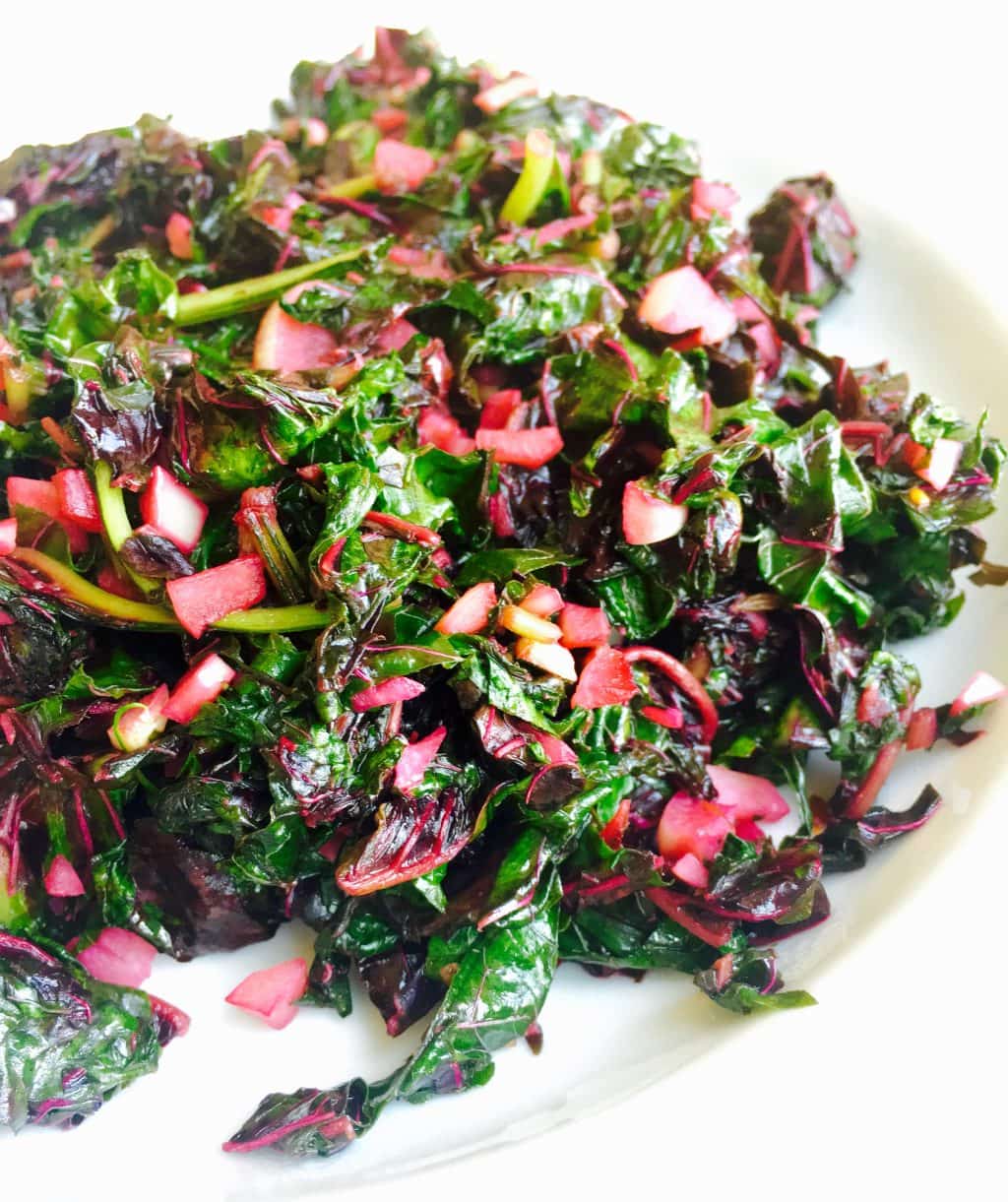
- Thorough Washing: Wash amaranth leaves thoroughly to remove dirt and debris before cooking.
- Cooking Methods: Sauté with garlic and olive oil for a simple side dish, or add to curries and stews for color and texture.
- Nutrient Powerhouse: Amaranth leaves are nutrient-dense, offering benefits such as immune system support, healthy digestion, and overall well-being.
- Versatility: Experiment with various cooking methods and flavor pairings to explore the diverse culinary possibilities of amaranth leaves.
Here i would like to share one of my recepie of amranth leaves. This is a simple and delicious recipe using amaranth leaves:
Stir-Fried Amaranth Leaves with Garlic and Soy Sauce
Ingredients:
- 2 cups fresh amaranth leaves, washed and chopped
- 2-3 cloves of garlic, minced
- 1 tablespoon soy sauce
- 1 tablespoon cooking oil
- Salt and pepper to taste
Instructions:
- Heat the cooking oil in a pan over medium heat.
- Add the minced garlic and sauté until fragrant, about 1 minute.
- Add the chopped amaranth leaves to the pan and stir-fry for 2-3 minutes until wilted.
- Drizzle soy sauce over the leaves and continue to stir-fry for another 1-2 minutes.
- Season with salt and pepper to taste.
- Remove from heat and serve hot as a nutritious side dish.
This dish is quick to prepare, packed with flavor, and showcases the unique taste of amaranth leaves. Enjoy the earthy goodness of this nutritious green in a simple and satisfying stir-fry!
Exploring Cultural Significance of Amaranth
Amaranth holds a rich cultural significance in various societies around the world.
- Sacred Plant in Latin America: Revered by the Aztecs, amaranth symbolizes immortality and abundance, reflecting strength, prosperity, and spirituality in Latin American cultures.
- Resilience and Adaptability: Amaranth’s ability to thrive in diverse climates has made it a staple in diets and rituals in Latin American countries.
- Nutritional and Medicinal Value: Valued for its nutritional prowess and medicinal properties in certain Asian cultures, amaranth is incorporated into traditional dishes and herbal remedies.
- Health and Vitality: Consumption of amaranth is believed to bestow health and vitality in Asian cultures, further emphasizing its cultural significance.
- Universal Appeal: The deep-rooted cultural connections to amaranth highlight its universal appeal, transcending geographical boundaries.
- Preservation of Heritage: The importance of preserving and celebrating amaranth’s heritage underscores its significance for future generations to appreciate and enjoy.
Sharing Amaranth Seeds and Knowledge with Others
Sharing amaranth seeds and knowledge with others is a wonderful way to spread the joy and benefits of growing this nutritious crop.
- Seed Exchange: Diversify your seed collection and contribute to heirloom variety preservation by exchanging seeds with fellow gardeners.
- Sharing Tips and Techniques: Help novices navigate the growing process and ensure successful harvests by sharing tips and techniques for growing amaranth.
- Community Engagement: Participate in educational workshops, community seed swaps, and online forums to connect with like-minded individuals passionate about amaranth cultivation.
- Collaborative Learning: Collaborate with others to learn new cultivation methods, troubleshoot challenges, and discover innovative ways to incorporate amaranth into your diet.
- Community-Based Agriculture: Actively participate in the tradition of community-based agriculture by sharing seeds and knowledge with others.
- Fostering Camaraderie: Foster a sense of camaraderie among growers worldwide through seed sharing and collaborative learning initiatives.
Celebrating the Harvest of Amaranth
Watch video for more information:
FAQ
Can I eat the leaves of the amaranth plant?
Yes, you can eat the leaves of the amaranth plant. They are nutritious and can be used in cooking just like spinach or other leafy greens.
Is it easy to grow amaranth in a home garden?
Yes, amaranth is relatively easy to grow in a home garden. It is a hardy plant that can thrive in various soil conditions.
What are some traditional dishes that use amaranth grain?
Traditional dishes that use amaranth grain include porridges, breads, and soups. Amaranth grain can also be popped like popcorn or used as a crunchy topping for salads.
How long does it take for amaranth seeds to mature?
Amaranth seeds typically mature within 2-3 months after planting. You can tell that the seeds are ready for harvest when the seed heads turn brown and dry.
Are there any specific health benefits of eating amaranth?
Yes, amaranth is a nutritious grain that is high in protein, fiber, and various vitamins and minerals. It is also gluten-free, making it a great option for those with gluten sensitivities.

Studied Agricultural Engineering-Plant Protection at University of California, Davis.
Head of Content writing team at Southelmontehydroponics.com


